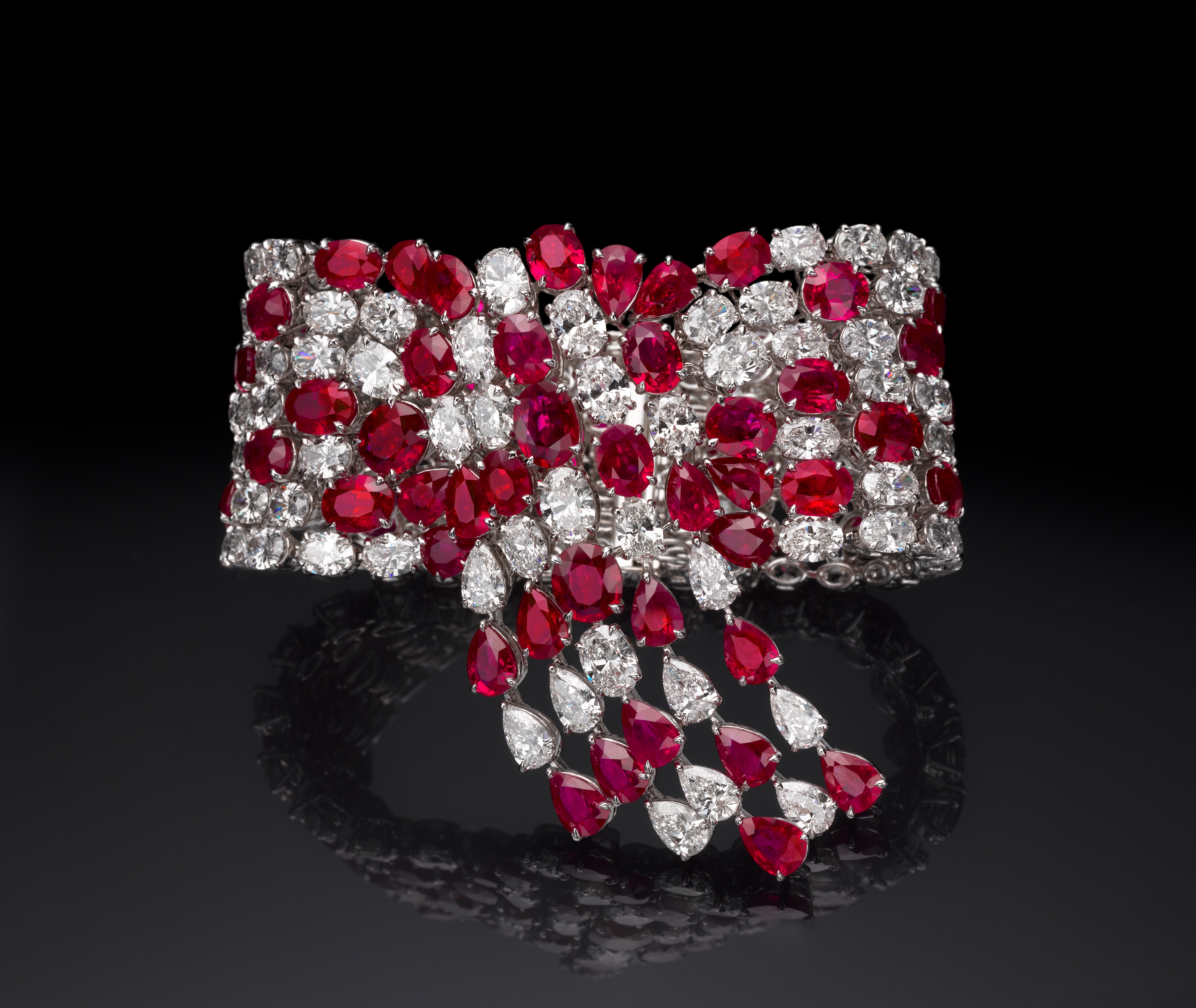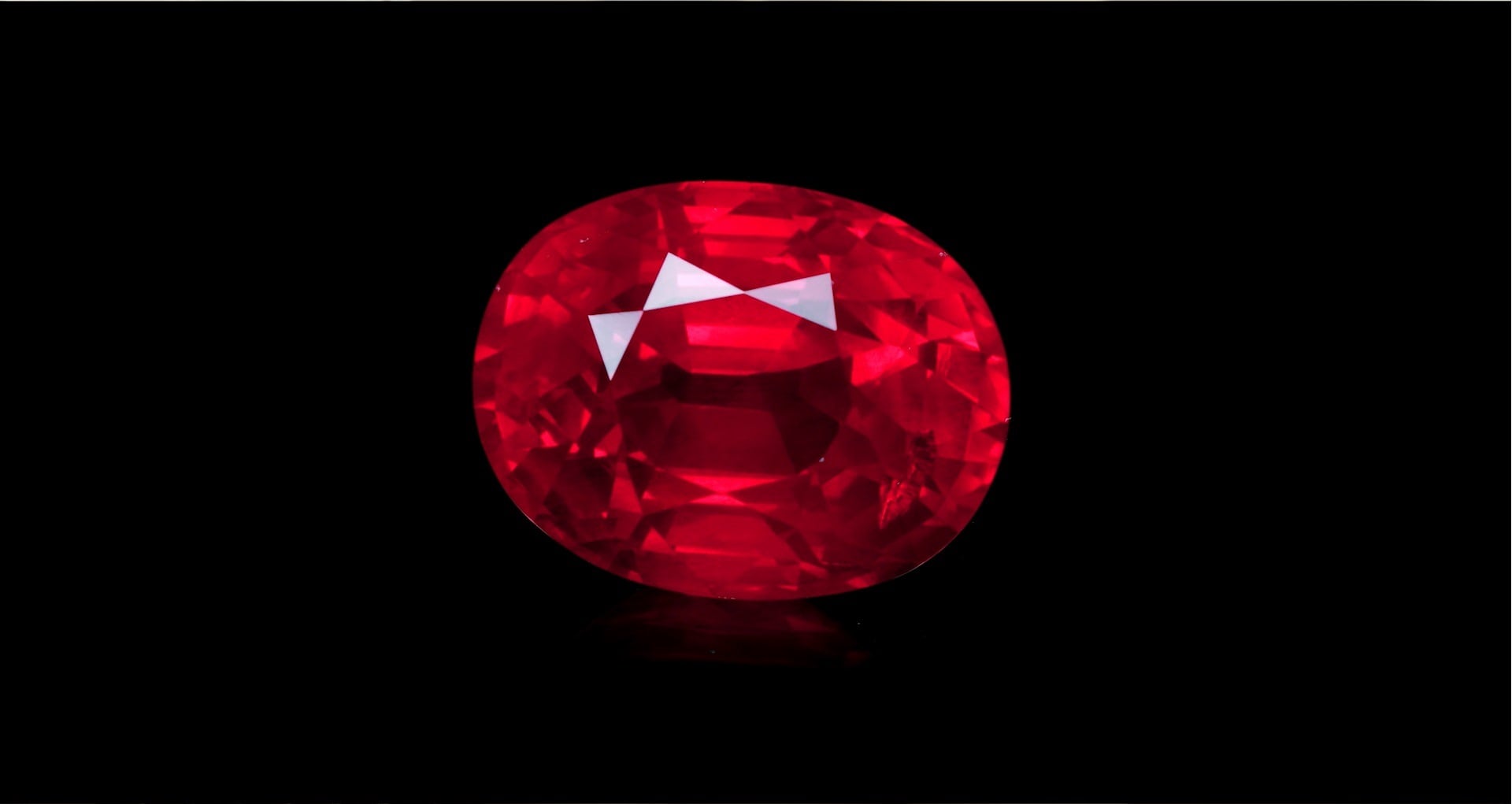
Ruby 101
For thousands of years, rubies have been recognized as one of the most valuable and captivating precious gemstones. Their bold color, sheer rarity, scintillating brilliance and profound historical significance have transformed rubies into the ultimate expression of power and passion. These extremely desirable stones command increasing per-carat prices with every passing year. However, not all rubies are created equal. In the following blog, we’re going to expand on a number of Ruby treatments and sources that result in varying prices.
What are rubies made of?
Rubies are a part of the Corundum family, similarly to Sapphires. They are one of the second hardest materials, second only to diamonds and moissanite, making them not only beautiful but also very durable. Pure corundum is colorless and made up of oxygen and alumnimum. In the case of rubies, though, a small presence (around 1%) of chromium replaces aluminum, which makes it appear red. This is because chromium atoms reflect light that is in the red part of the light spectrum.
Rubies can come in a variety of colors from deep blood red to light pink. A pink enough ruby may be considered a pink sapphire. Despite chemically being the same, the percentage of chromium creates difference between them - above 0.9% chromium classifies a stone as Ruby, whereas a chromium presence of less than 0.5% is classified a Pink Sapphire. Please note, some jewelers will sell pink sapphires as light red rubies since rubies tend to command higher prices than sapphires.
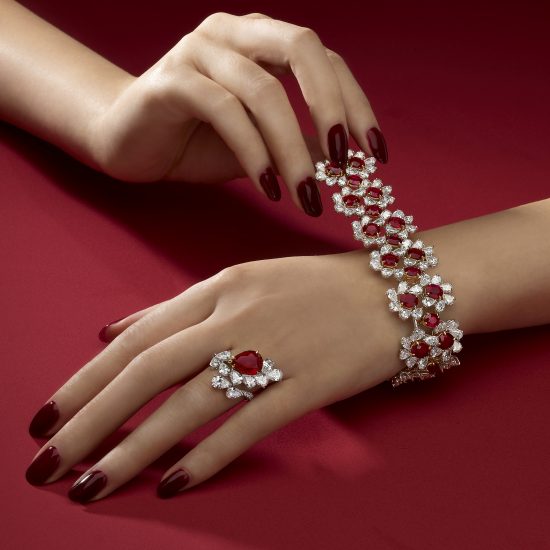
Ruby's Historical Significance
Included as part of the five Cardinal Gems, Rubies hold an important role in history and in our hearts. The Sanskrit name for Ruby is ratnaraj, or ‘King of Precious Stones’ and Ancient Hindus believed owning a ruby would bring about peace with their enemies. The origin of the name Ruby comes from the latin word for red; ruber. It is the distinguishing red color that draws our association of rubies with flame-like passion, power, love, and desire. Among the Royal British family, rubies are valued for their ability to protect, hence a 170 carat ruby as the center stone of the royal crown.
Heated Rubies
More often than not, mined Rubies have a rather dull appearance. In order to enhance their color and luster, Rubies are often treated with heat. If you are on the market shopping for a Ruby adorned piece of jewelry, it is safe to assume that it is heated since only 1-2% of the world’s Rubies reach the market untreated. Rubies that come with certification that proves no evidence of any heat treatment command premium prices over their heated counterparts.
These heated rubies are exposed to high temperatures that dispel impurities and enhance the gemstone’s color and luster. This heating removes the purpleish tint, which yields a more pure red color. With regards to impurities, heating gets rids of ‘silk’, which are microscopic inclusions that cause the gem to be more opaque. On the other hand, heating can also cause ‘recrystallization’ of the silk, which makes them more prominent, therefore giving the stone a stronger asterism.
The process of heating has been used for hundreds of years and is considered a common and acceptable industry practice. It is important to note that heated rubies don’t require any special care as the heating treatment is permanent (i.e. doesn’t degrade over time).
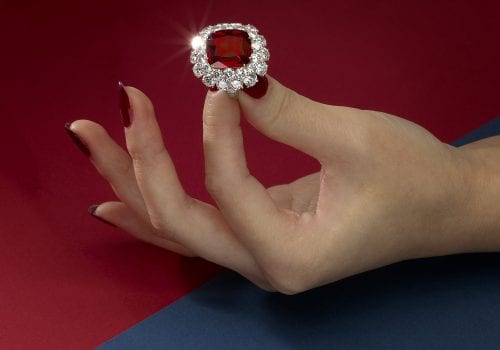
Pigeon's Blood
Pigeon blood rubies are the most reputable and valuable of all rubies on the market. The origin of the name ‘pigeon blood’ is a topic of great dispute and no concrete answer. The term was coined in Burma where locals called the finest and most vivid rubies ko-twe ‘pigeon’s blood’ claiming that the perfect ruby is the same color as the blood of a killed pigeon.
Today, “pigeon’s blood” is used to describe the world’s finest and purest reds. The term is extremely sellable and exudes importance and exclusivity. In order to a gemstone to be classified as a ruby, it must be 51% red. However, pigeon blood rubies have a vivid red appearance with a blue (or purple after mixed with red) undertone. This distinct vivid red color is accentuated when set in a gold mounting so that the yellow cancels out this blue undertone.
There are fivemain institutions which grade Rubies, in addition to other recognized gemstones, and these are AGL, SSEF, Gubelin, GIA, and GRS. Each of these use varying measures, including color, presence of silk, fluorescence, etc, to determine whether or not a ruby may officially be dubbed a "pigeon's blood" ruby. In a coming blog post, we will expand on just how each labs grade precious gems.
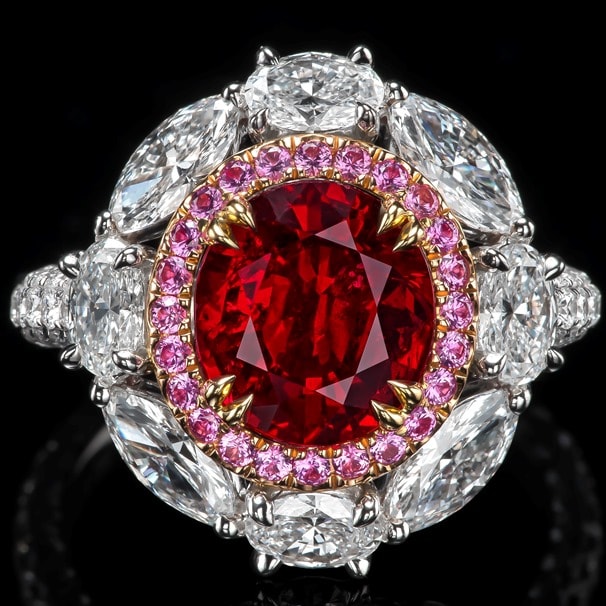
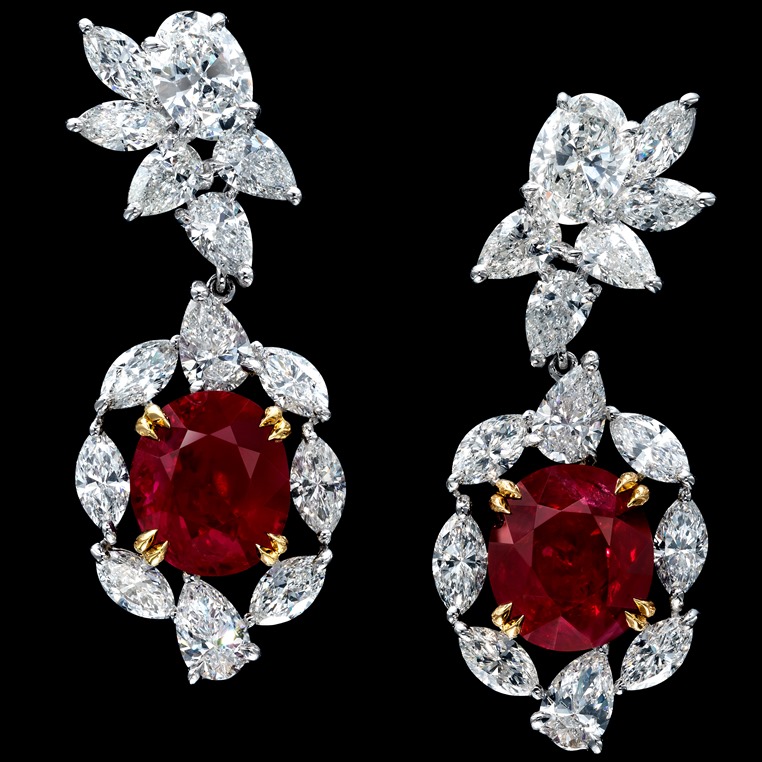
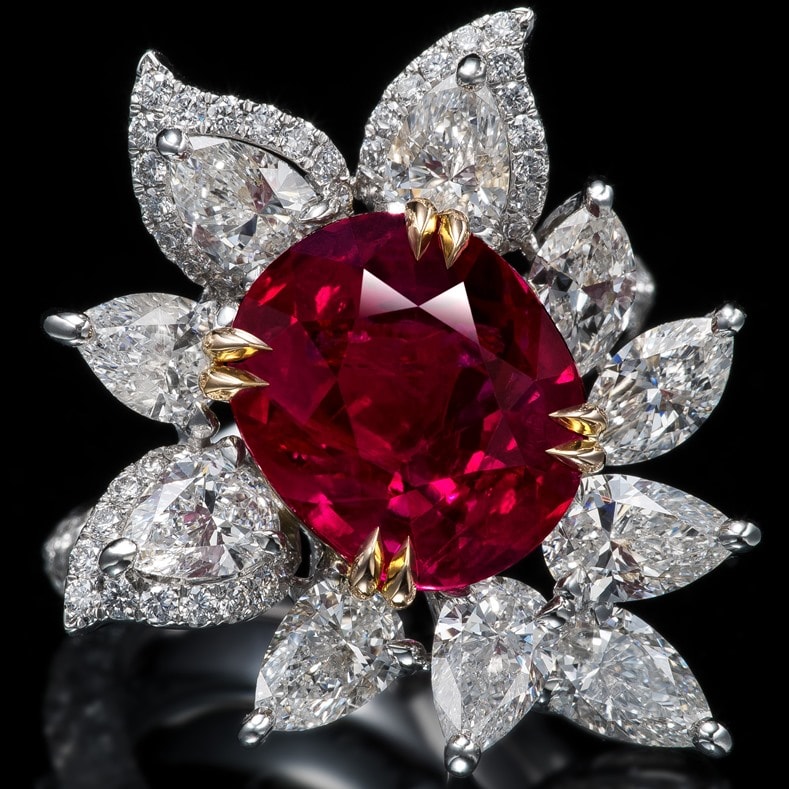
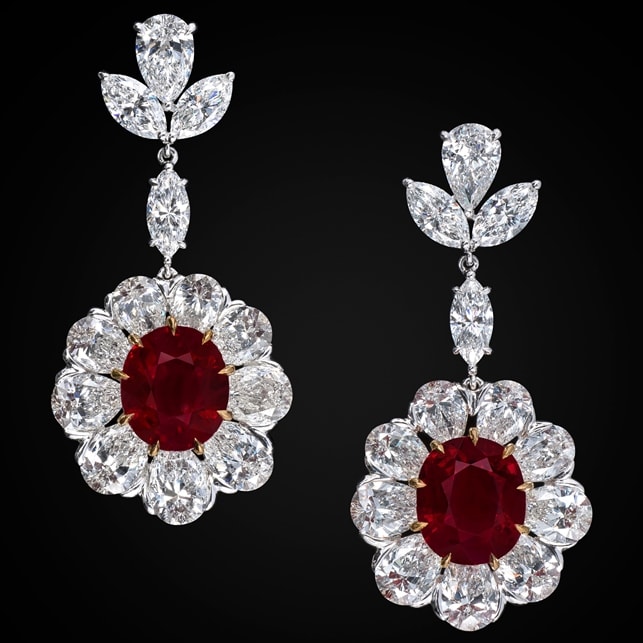
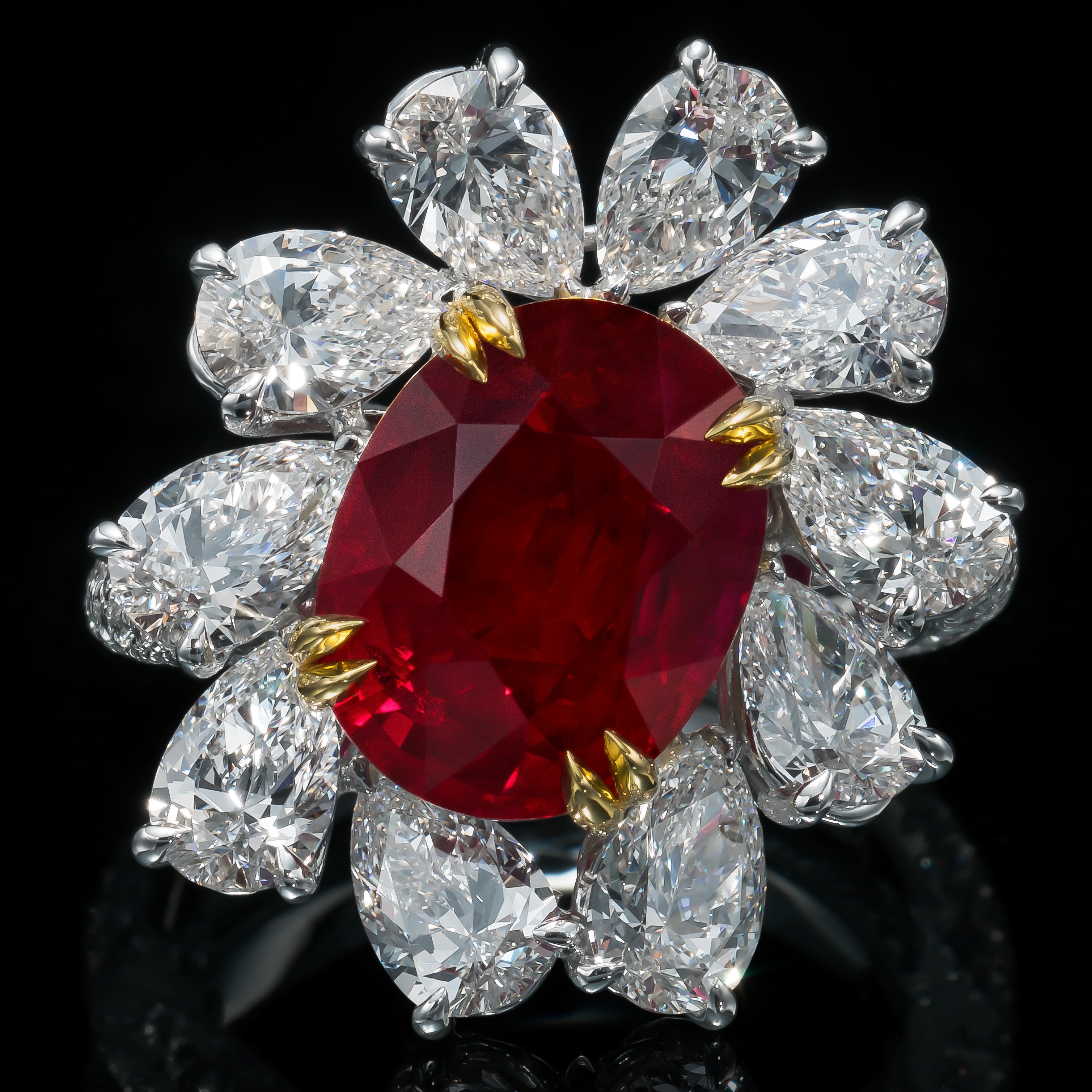
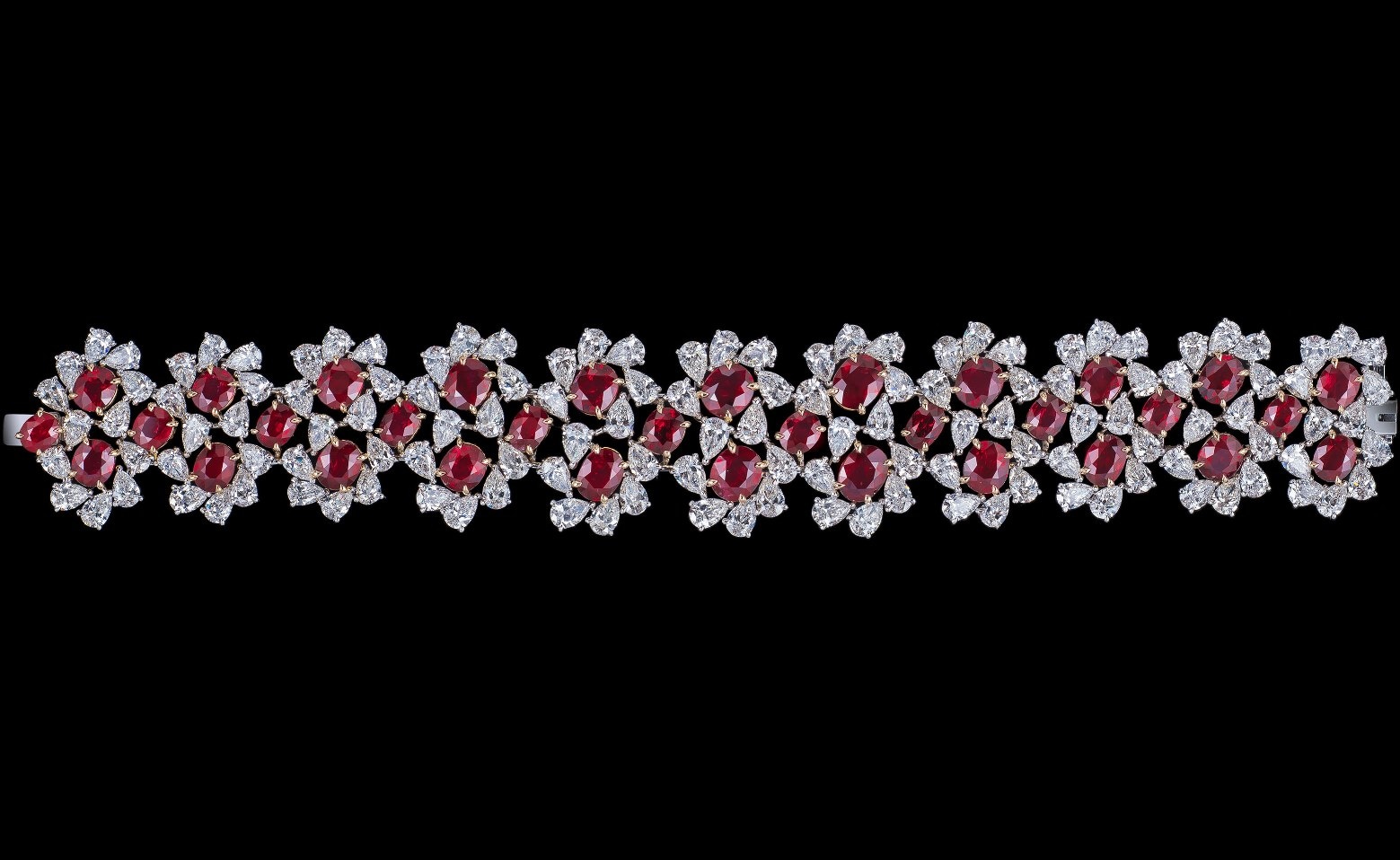
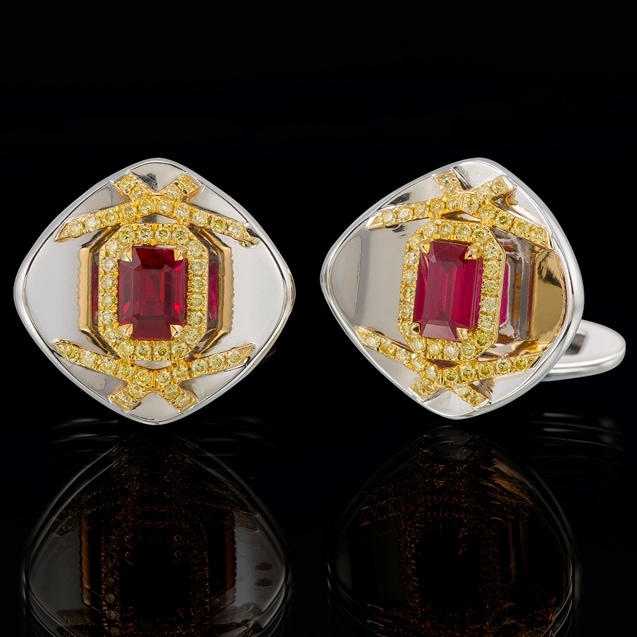
Ruby Origins
It is known and recognized, industry-wide, that the finest Rubies come from the Mogok region in Myanmar (formally Burma). According to Richard Hughes, who authored “Ruby & Sapphire: A gemologist’s Guide”, there are two things that distinguish Burmese rubies from their counterparts. The first is the combination of the ‘bluish-reddish body color of the gemstone and the “purer” red fluorescent emission, which together give the gemstone its high intensity color. The second is the presence of the aforementioned silk, which give the color a ‘softness and greater dispersion’ across the face of the gem. This is especially interesting given that
Besides Burma, other notable sources of fine quality rubies include Mozambique, Madagascar, Tanzania, Thailand, and Sri Lanka. According to Hughes and with agreement from the founder of Dehres, Ephraim Zion, this new deposit from Mozambique presents us with rubies with such deep and saturated red colors, that they may be compared with those of Burmese origin. Many of these Mozambique rubies are of such high quality that they attain the title of ‘Pigeon Blood’ while being unheated.
Dehres Collection
We proudly hold a wide collection of precious rubies including, both, heated and unheated from countries including but not limited to Myanmar, Mozambique, Tanzania, and Thailand. We invite you to make an appointment and view our collection of loose and mounted rubies.
